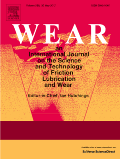
WEAR
Scope & Guideline
Driving Insights into Condensed Matter Physics
Introduction
Aims and Scopes
- Tribological Mechanisms and Wear Analysis:
Research related to the fundamental mechanisms of wear, including adhesion, abrasion, erosion, and fatigue, as well as the development of predictive models for wear behavior in different materials and conditions. - Material Development and Characterization:
Innovative studies on the development and characterization of new materials, coatings, and composites designed to enhance wear resistance, including high-entropy alloys, nanocomposites, and surface modifications. - Lubrication and Friction Studies:
Exploration of lubrication regimes, including the effects of various lubricants, additives, and surface textures on friction and wear performance, with a focus on environmentally friendly and bio-based lubricants. - Experimental and Numerical Simulation:
Utilization of experimental methods and numerical simulations to analyze and predict wear behavior under various loading and environmental conditions, contributing to more accurate models for wear assessment. - Applications in Engineering and Industry:
Practical applications and case studies that highlight the importance of wear studies in engineering fields such as automotive, aerospace, railway, and manufacturing, addressing real-world challenges and solutions.
Trending and Emerging
- Nanocomposites and Advanced Materials:
An increasing number of studies are focusing on the development and application of nanocomposites, particularly those incorporating graphene and carbon nanotubes, due to their superior mechanical and tribological properties. - Additive Manufacturing and Wear Performance:
Research on the wear performance of additively manufactured components is gaining traction, highlighting the unique challenges and opportunities presented by this technology in terms of material properties and wear behavior. - Biotribology and Environmentally Friendly Lubricants:
There is a growing interest in biotribology, particularly the study of wear in biological systems and the development of sustainable, bio-based lubricants that minimize environmental impact. - Multiscale Modeling and Machine Learning:
The integration of multiscale modeling techniques and machine learning approaches in predicting wear behavior is trending, allowing for more accurate simulations and performance predictions in complex tribological systems. - Wear in Extreme Environments:
Emerging research focuses on wear mechanisms in extreme conditions, such as high temperatures, corrosive environments, and under varying load conditions, which are critical for industries like aerospace and energy.
Declining or Waning
- Traditional Wear Testing Methods:
There has been a noticeable decrease in publications focusing on conventional wear testing methods, such as pin-on-disc and block-on-ring tests, as researchers tend towards more innovative and application-specific approaches. - General Coating Studies without Specific Applications:
Research that broadly addresses coating technologies without a clear application context is less prevalent, as the journal increasingly emphasizes practical applications and the performance of coatings in specific engineering scenarios. - Basic Material Properties Analysis:
Studies focusing solely on the fundamental properties of materials in isolation, without linking them to wear performance or tribological applications, are becoming less common as the field shifts towards integrated studies that consider both material behavior and wear mechanisms.
Similar Journals
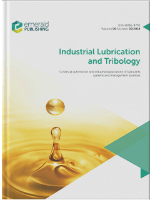
INDUSTRIAL LUBRICATION AND TRIBOLOGY
Exploring the intersection of efficiency and innovation in tribology.INDUSTRIAL LUBRICATION AND TRIBOLOGY, published by EMERALD GROUP PUBLISHING LTD, is a distinguished journal dedicated to the fields of lubrication science and tribology, examining the fundamental aspects and innovative applications that enhance energy efficiency and mechanical performance in industrial settings since its inception in 1948. With an ISSN of 0036-8792, the journal is indexed in recognized databases, and its significant contributions have earned it a respectable Q3 category ranking in the disciplines of Energy, Mechanical Engineering, and Surfaces, Coatings, and Films. Researchers and professionals engaged in these fields will find valuable insights and cutting-edge research that drive innovation and improve the sustainability of industrial practices. While the journal does not currently offer open access options, it continues to be a pivotal platform for disseminating knowledge among scholars and practitioners. Its ongoing relevance in advancing tribological science highlights the critical role of lubrication in enhancing machine longevity and operational efficiency.
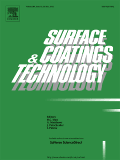
SURFACE & COATINGS TECHNOLOGY
Innovating Coatings for a Sustainable FutureSURFACE & COATINGS TECHNOLOGY is a premier academic journal that has been at the forefront of research and innovation since its inception in 1986, diligently published by Elsevier Science SA. With an impressive range of studies focusing on surface and coatings technologies, the journal has established itself as a leading platform within the fields of Chemistry, Condensed Matter Physics, and Materials Science. Notably, it holds a distinguished Q1 ranking in multiple categories, showcasing its relevance and high impact in the academic community. Furthermore, it is recognized for its rigorous peer-review process and is indexed in esteemed databases, maintaining its strong position with a ranking of #17 in Surfaces, Coatings, and Films. Although the journal does not currently offer open access options, it continues to be a crucial resource for researchers, professionals, and students seeking insights into cutting-edge developments and applications in the domain of surface engineering. With a commitment to advancing knowledge across these disciplines, SURFACE & COATINGS TECHNOLOGY is an essential read for anyone interested in the latest trends and technologies shaping the industry.
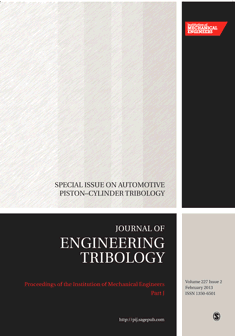
PROCEEDINGS OF THE INSTITUTION OF MECHANICAL ENGINEERS PART J-JOURNAL OF ENGINEERING TRIBOLOGY
Pioneering research that drives engineering performance.PROCEEDINGS OF THE INSTITUTION OF MECHANICAL ENGINEERS PART J: JOURNAL OF ENGINEERING TRIBOLOGY is a premier scholarly publication dedicated to the intricate field of tribology, which encompasses the study of friction, wear, and lubrication in mechanical systems. Published by SAGE Publications Ltd, this journal aims to advance the scientific understanding and application of tribological principles across various industries, particularly in mechanical engineering. With an impressive impact factor and classified in the Q2 and Q3 quartiles in its respective categories, it provides a vital platform for disseminating innovative research and technical advancements. The journal spans over a rich timeline from 1994 to 2024, signifying its longstanding contribution to the academic community. It invites original research articles, comprehensive reviews, and insightful case studies that push the boundaries of existing knowledge and foster collaborative efforts among researchers, professionals, and students in the field. For those engaged in mechanical engineering and materials science, the journal offers unparalleled access to cutting-edge research that can inform and enhance practical applications in the industry.
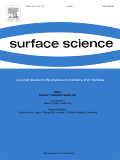
SURFACE SCIENCE
Innovating the Future of Materials ChemistrySURFACE SCIENCE is a prominent journal in the fields of Condensed Matter Physics, Materials Chemistry, and Surface Engineering, published by Elsevier in the Netherlands. With an ISSN of 0039-6028 and an E-ISSN of 1879-2758, the journal encompasses a wide range of research related to the physical and chemical properties of surfaces and interfaces, serving as a valuable resource for researchers, professionals, and students alike. As of 2023, it holds a Q3 ranking across multiple categories, indicating its significant contribution to its respective fields, despite room for improvement in its overall impact within the scientific community. Researchers will find that SURFACE SCIENCE provides a platform for innovative and interdisciplinary studies, making it essential for those looking to stay updated on emerging trends and technologies in surface science. While the journal is currently not open access, its reputation and robust indexing reinforce its importance in advancing scientific knowledge and fostering new discoveries.
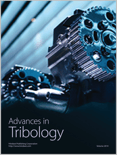
Advances in Tribology
Pioneering Research in Tribological ScienceAdvances in Tribology is a premier open access journal published by HINDAWI LTD, focused on the rapidly evolving fields of tribology, mechanical engineering, and materials science. Since its inception in 2008, the journal has provided a crucial platform for researchers, professionals, and students to disseminate knowledge and advancements in the understanding of friction, wear, and lubrication phenomena. With an impact factor reflective of its significance, Advances in Tribology is ranked in the Q3 category for both Mechanical Engineering and Surfaces, Coatings, and Films as of 2023, situating it among the prominent journals in its field. The journal's commitment to high-quality research is evident in its rigorous peer-review process and its dedication to fostering open access, allowing for widespread dissemination of impactful research. Published in Egypt with global reach, this journal aims to bridge the knowledge gap in tribological applications and innovations, serving as a key resource for those engaged in the study and application of surface interactions.

Jurnal Tribologi
Exploring the dynamics of friction, wear, and lubrication.Jurnal Tribologi, published by the MALAYSIAN TRIBOLOGY SOC-MYTRIBOS, stands as a pivotal platform for research in the interdisciplinary field of tribology—focusing on the friction, wear, and lubrication of materials. Established in Malaysia and embracing Open Access since 2014, this journal serves a diverse readership and enables worldwide accessibility to cutting-edge research. With an ISSN of 2289-7232, it is indexed across various categories, achieving a commendable Q3 ranking in materials chemistry, mechanical engineering, and several other pertinent fields for 2023. The journal’s commitment to advancing knowledge in its domain is reflected in its circulation of valuable research findings and innovative methodologies, vital for both academic and industry professionals. Researchers, students, and practitioners alike will find Jurnal Tribologi an essential resource, advancing their understanding and application of tribological systems from 2019 to 2024 and beyond.
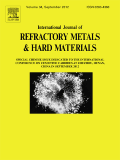
INTERNATIONAL JOURNAL OF REFRACTORY METALS & HARD MATERIALS
Transforming engineering through cutting-edge materials science.INTERNATIONAL JOURNAL OF REFRACTORY METALS & HARD MATERIALS, an esteemed publication by Elsevier Science Ltd, stands at the forefront of materials research, focusing on the development and application of refractory metals and hard materials in various engineering fields. With an impressive impact factor and recognition as a Q1 journal across several categories including Ceramics and Composites, Materials Chemistry, and Mechanical Engineering, it serves as a vital resource for researchers, professionals, and students alike. The journal has been continuously publishing high-quality research since its inception in 1982, with a convergence of developments spanning through to 2024. Its Scopus rankings further emphasize its significance, boasting ranks in the top percentiles of relevant scientific fields. Although it operates under a subscription model, the depth and rigor of the research published within its pages ensures that it remains an invaluable tool for those pursuing innovation and exploration in materials science.

TRIBOLOGY LETTERS
Innovative Insights into Tribology and Its Industrial ApplicationsTRIBOLOGY LETTERS is a distinguished peer-reviewed academic journal published by SPRINGER/PLENUM PUBLISHERS, focusing on advancements in the field of tribology and its applications across various engineering domains. With an ISSN of 1023-8883 and an E-ISSN of 1573-2711, this journal serves as a crucial platform for disseminating cutting-edge research and technological innovations, operating from its esteemed headquarters in the United States. The journal is categorized in the Q2 quartile across multiple domains including Mechanical Engineering, Mechanics of Materials, Surfaces and Interfaces, and Surfaces, Coatings and Films, showcasing its significant impact within the respective fields. With Scopus rankings placing it in the top 25% for Engineering and top 20% for Physics and Astronomy related categories, TRIBOLOGY LETTERS continues to be an essential resource for researchers, professionals, and students looking to deepen their understanding of tribological phenomena and enhance their applications in industry and technology. While it does not currently offer open access options, the journal continues to invite high-quality contributions that contribute to the ongoing dialogue and advancement in tribological science.

Journal of Friction and Wear
Advancing Knowledge in Mechanical EngineeringJournal of Friction and Wear, published by PLEIADES PUBLISHING INC, is a pivotal resource in the field of mechanical engineering, with a particular emphasis on the study of friction, wear mechanisms, and their implications in various materials. With an ISSN of 1068-3666 and an E-ISSN of 1934-9386, this journal provides a platform for cutting-edge research and reviews that contribute significantly to our understanding in these areas. Although currently classified under Q3 in both Mechanics of Materials and Surfaces, Coatings and Films, the journal is making strides towards higher rankings, reflecting its growing influence as it publishes comprehensive analyses and innovative findings. Researchers and professionals can access vital studies, offering insights into improving material durability and performance, integral to numerous industries. This journal serves as a key reference point for students and scholars alike, supporting their quest for knowledge in the evolving landscape of material science.

SURFACE REVIEW AND LETTERS
Exploring the Frontiers of Material ScienceSURFACE REVIEW AND LETTERS, published by WORLD SCIENTIFIC PUBL CO PTE LTD, is a pivotal journal in the fields of condensed matter physics, materials chemistry, and surfaces and interfaces. With an ISSN of 0218-625X and an E-ISSN of 1793-6667, this journal serves as a platform for cutting-edge research and innovative developments from 1996 to 2024. Despite its classification in the Q4 and Q3 quartiles for various categories in 2023, SURFACE REVIEW AND LETTERS emphasizes the importance of inter-disciplinary collaboration and the rapid dissemination of valuable insights, making it an essential resource for researchers and professionals eager to stay at the forefront of material science. Although currently lacking an open access option, the journal invites a wide range of submissions—fostering knowledge sharing among scholars and contributing to the advancement of the scientific community. Aspiring authors and readers will benefit from the opportunity to engage with diverse studies and methodologies, underscoring the journal's commitment to excellence in materials research.